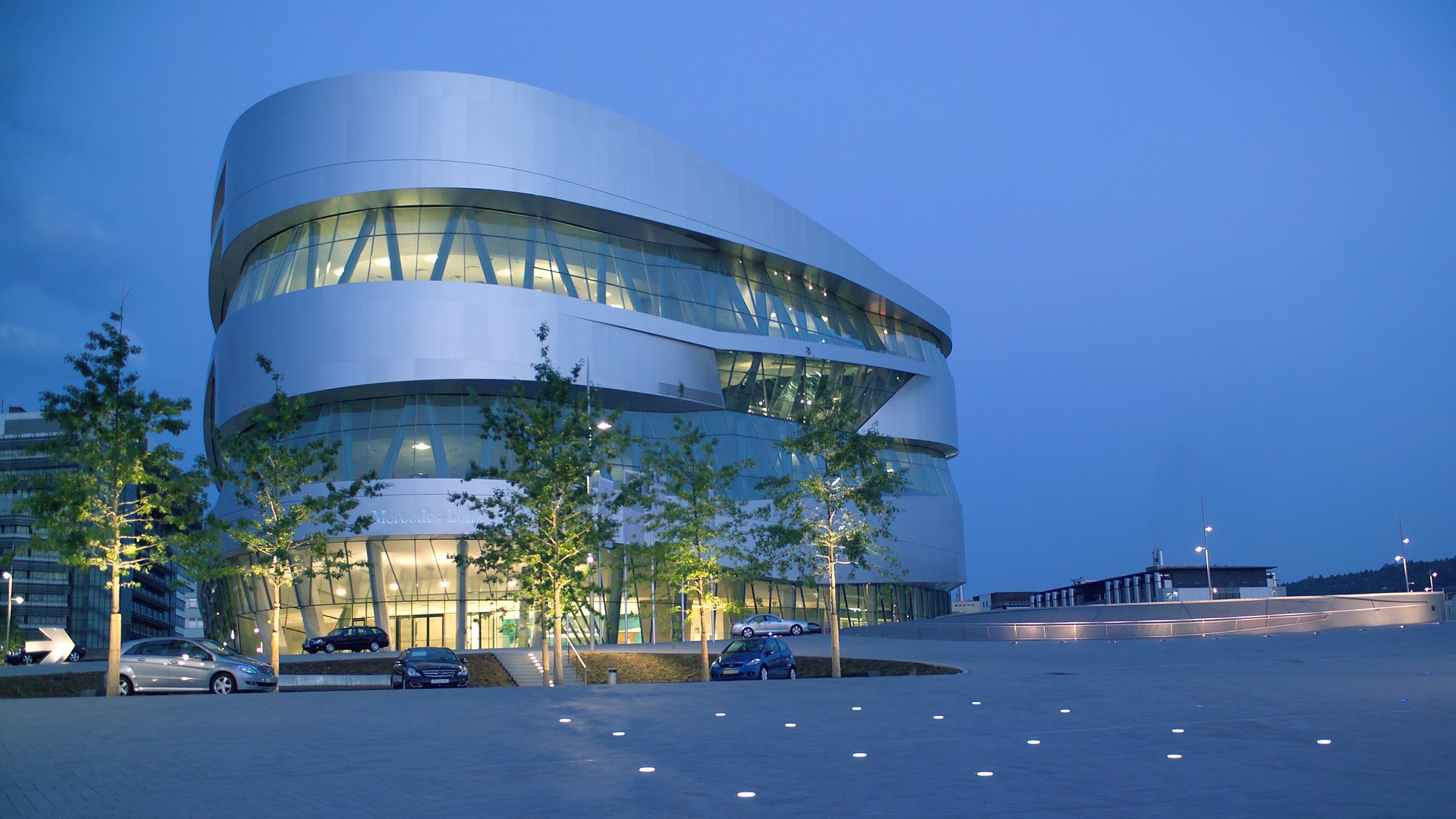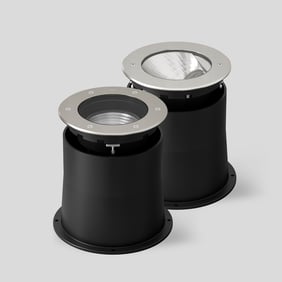
Using software developed in house at their firm, Dutch star architects Ben van Berkel and Caroline Bos have defied many previously valid planning parameters in the planning and construction of the Mercedes-Benz Museum. The building has a rounded triangular footprint. Interweaving spirals wind around the atrium in the inner courtyard, reminiscent of a nuclear DNA double helix.
Other architectural features of the museum building include 33-metre deep rooms without supports and the double-curved load-bearing components (“twists”). The ribbon glazing features 1,800 triangular panes of glass, each one different from the other. The museum’s 17,000 square meter exhibition space houses 1,500 exhibits, 160 of which are vehicles. Two tours start on the top floor and wind their way down nine levels to the exit.
The grounds are modelled on the same principles as the curvaceous museum building, with recessed, elevated, and plaza-like areas cut into the terrain. These form ramps and parapets that are highlighted to great effect at night. BEGA luminaires are an integral part of this architectural masterpiece, which embodies the Daimler philosophy of innovation, exclusivity, and dynamism.
In the entrance area, BEGA in-ground luminaires with a shallow installation depth are flush-mounted in the paving. In-ground luminaires with adjustable floodlights illuminate the building as well as the huge arrows which serve as guideposts in the grounds.
In-ground floodlights place the focus on the building’s impressive architecture, completely illuminating a vertical surface as far as the lower edge. Drive-over BEGA in-ground luminaires with covers made of cast bronze are used for this purpose.
BEGA recessed wall luminaires provide uniform illumination of paths. The shielded luminaires direct the light downwards, and are fully shielded above the horizontal. The highest degree of illuminance is generated in the immediate vicinity of the luminaire.
Client Daimler AG, Stuttgart Architecture UNStudio, Ben van Berkel & Caroline Bos, Amsterdam Museum design HG Merz, Stuttgart









